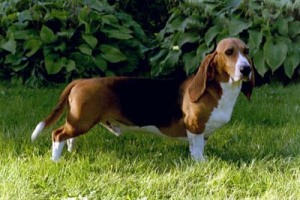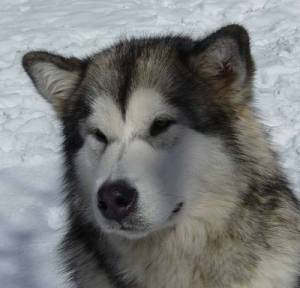Dog Breed 23
Basenji
The Basenji is a breed of hunting dog that was bred from stock originating in central Africa; specifically, it may be classified as belonging to the sighthound type.
The Basenji produces an unusual yodel -like sound, due to its unusually shaped larynx. This trait also gives the Basenji the nickname “Barkless Dog.” In behavior and temperament they have some traits in common with cats.
Basenji are small, elegant-looking, short-haired dogs with erect ears, a tightly curled tail, and a graceful neck. Some people consider their appearance similar to that of a miniature deer. A basenji’s forehead is wrinkled, especially when the animal is young. Basenji eyes are typically almond shaped, which gives the dog the appearance of squinting seriously.
Dogs typically weigh 24 pounds (11 kg) and stand 16 inches (40.6 cm) at the withers. They are typically a square breed, which means that they are as long as they are tall. The basenji is an athletic dog and is deceptively powerful for its size. They have a graceful, confident gait like a trotting horse, and skim the ground in a “double-suspension gallop”, with their characteristic curled tail straightened out for greater balance, when running flat-out at their top speed.
The Basenji is alert, affectionate, energetic, and curious and reserved with strangers. The Basenji is somewhat aloof, but can also form strong bonds with people. Basenjis may not get along with non-canine pets. It is usually patient, but does best with older considerate handlers. Basenjis dislike wet weather, like to climb, can easily get over chain wire fences, and are very clever at getting their own way. The Basenji has the unique properties of not barking (it makes a low, liquid ululation instead) and cleaning itself like a cat. It can be described as speedy, frisky, tireless at play, and teasing the owner into play.
Basenji
The Basenji is a breed of hunting dog that was breed from stock originating in central Africa; specifically, it may be classified as belonging to the sighthound type.

The Basenji produces an unusual yodel -like sound, due to its unusually shaped larynx. This trait also gives the Basenji the nickname “Barkless Dog.” In behavior and temperament they have some traits in common with cats.
Basenji are small, elegant-looking, short-haired dogs with erect ears, a tightly curled tail, and a graceful neck. Some people consider their appearance similar to that of a miniature deer. A basenji’s forehead is wrinkled, especially when the animal is young. Basenji eyes are typically almond shaped, which gives the dog the appearance of squinting seriously.
Dogs typically weigh 24 pounds (11 kg) and stand 16 inches (40.6 cm) at the withers. They are typically a square breed, which means that they are as long as they are tall. The basenji is an athletic dog and is deceptively powerful for its size. They have a graceful, confident gait like a trotting horse, and skim the ground in a “double-suspension gallop”, with their characteristic curled tail straightened out for greater balance, when running flat-out at their top speed.
The Basenji is alert, affectionate, energetic, and curious and reserved with strangers. The Basenji is somewhat aloof, but can also form strong bonds with people. Basenjis may not get along with non-canine pets. It is usually patient, but does best with older considerate handlers. Basenjis dislike wet weather, like to climb, can easily get over chain wire fences, and are very clever at getting their own way. The Basenji has the unique properties of not barking (it makes a low, liquid ululation instead) and cleaning itself like a cat. It can be described as speedy, frisky, tireless at play, and teasing the owner into play.



 Posted by riya13
Posted by riya13 







